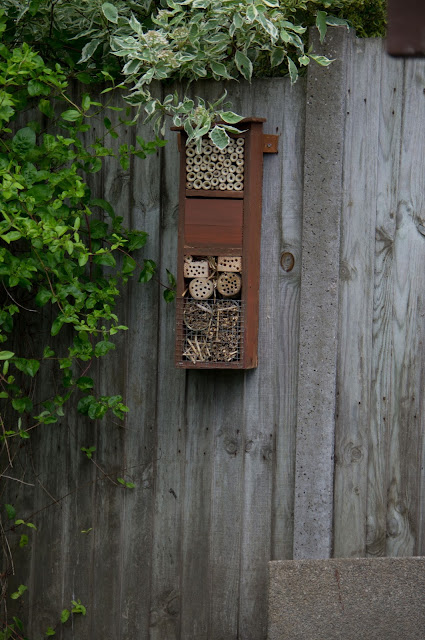I have always had a deep affinity with the Bee. It goes about its business from flower to flower collecting valuable Pollen. It has been well documented by the press that they are under threat from parasitic attack and measures have been taken to prevent extinction. If they go then as said elsewhere our food source enters a danger zone too.
On first appearance they are small bundles of furry insect, barred in yellow orange stripes generally. The big Bumble Queens first appear flying low and entering open doors or windows to any building looking for that perfect hole leading to a cavity, upon which for her to develop her colony. Often the Honey Bee is misidentified as the most irritating of insects: The Wasp. It is assumed that the yellow and black stripes mean Wasp and not the humble Bee to the untrained unassuming eye.
This blog contains those few Bees that I have managed to photograph so far. Two of these have both utilised a Tit box and Insect box to set up a colony. The first, the Tree Bumblebee used the hexagonal tit box on the side of our shed facing south. It would get the Sun on it from around 10am until 4pm in the summer months. It was small in Bee numbers, with I would say somewhere between 20-30 Bees. The previous 2 years a Bluetit family had used the box but for some reason, were not to return this particular summer of 2013. Still full of Moss and other prime nest materials (as seen below), it was pretty much a ready made home for the Bumblebees.
In this photo one worker is using his wings to fan cool air inside the box on what was a very hot day in June 2013. At some points 3 would line the hole doing this. They stayed for only 3 months I recall and were gone. They have not returned in 2014 and this year will hopefully see them make a return.
The next and current residents in the garden to utilise a man made home are Mason Bees. I had placed a ready made box with Cane cut to short lengths in the top half and other holes for Lacewing or Butterflies in the lower half. Then two weeks ago while out in the garden I spotted a strange Bee searching around the shed for suitable holes for which to reside. It was metallic green at the top and its abdomen was gold in colour with yellow hairs within it. A few appeared and rested in the Sun on leaves to. Then I spotted they were entering the Bee box. Just below and to the left were two of different size and appeared to me to be two different species. I wanted to capture these and carefully moved them to daylight as they were pre occupied with each other.
 |
| The brown liquid is either just fertilised eggs or the males sperm |
 |
| The second pair on another day |
After the initial pair, two days later a second pair were spotted mating on the leaves of a plant below. This gave me the chance to capture them in a natural location and not the table. The last photo is my personal favourite as it really captures the true colour of the Mason Bee. It was taken further along the garden resting on the planks that form the raised bed.
The next Bee which is a Honey Bee of some sorts, was actually the first Bee I photographed and was resting in the evening Sun.
The pale yellow colouring was a first spot for me at the time. It is slightly smaller than the traditional Honey Bee so commonly seen. It looks so delicate and was compliant to me photographing it.
The latest and final Bee was taken on the same day as the Mason Bees and was up on the Blossom of the Cherry Tree in the garden. Still a strand of Honey Bee I believe and this time was stunning deep orange colouration. What is impressive in this photo is how armour plated it looks on its abdomen. You can really see each plate/layer and how they slide over each other. This was very hard to take as I was looking just above head height and impressed any were sharp or usable. There were other Bee varieties on the Cherry Tree but they were so high up and inaccessible. At first I thought some were of Wasp subspecies or Wasp-fly type but upon research they were in fact Nomad Bees. One in particular had beautiful green compound eyes. I just wish I could have captured them too. Some were skirting the raised bed but were too timid with my presence. One day, just one day, I will get to capture their stunning detail.
Well the above was to be the final Bee in this blog, but as luck would have it after initially writing this, I ventured into the garden today and spotted in a Tit box that Tree Bumblebee's have in fact returned to my delight. I had initially gone into the garden to do 2 Bumblebee flower pot nests as seen on Springwatch's S.O.S article on them. And also to help put up an insect tower my father has just finished making. The following pics are from today's discovery and the nest examples.
 |
| Tree Bumblebee's building up mud around the entrance |
 |
| First halfway along the right hand side fence in the raised flower bed between the Mason and Tree Bee's |
 |
| Second placed on the opposite side of the garden at the bottom left corner |
 |
| Placed 6ft to the right of the Mason Bee nest |
The future of the Bumblebee has had a big helping hand today and time will tell if they are to become inhabited.





No comments:
Post a Comment